Village VoiceBy: Sarah Ferguson Published: Jan, 9 2006
http://www.villagevoice.com/blogs/runninscared/archives/002304.php
Their deaths seem so sadly ignoble. Crushed by a garbage carter. Plowed under by an ice cream delivery truck. Slammed from behind by a speeding SUV.
Twenty-one cyclists were killed in traffic accidents in New York City in 2005, up from 15 in 2004, and 13 in 2003. That made 2005 the most deadly year for bicyclists since 1999, when a record 35 died.
Yet rather than going after dangerous drivers, the NYPD spends its time spying on bike activists and sending undercovers to infiltrate Critical Mass rides and vigils for dead cyclists.
Angered by what they see as the city's refusal to rein in reckless drivers, more than 150 bicyclists turned out for a citywide memorial ride on Sunday (click for pics). They rode in groups from each of the five boroughs, then converged in Manhattan. Along the way, they stopped to commemorate the places where cyclists have died in the last year.
The event was organized by bike activists with Times Up! and the Brooklyn-based arts collective Visual Resistance, which affixed "ghost bikes"--bikes coated in white paint--near the spots where cyclists have perished.
"We wanted to respond in a way that would make the deaths of these cyclists less invisible," said Kevin Caplicki, a 27-year-old teacher from Gowanus, Brooklyn, who was inspired by similar campaigns in Pittsburgh and St. Louis.
"There's more people dying and more people are trying to get out and do something about it," says Times Up! founder Bill DiPaola. "We need to convince the city that they need to give bicyclists more respect, because their hostile attitude is creating this negative climate that just leads to more deaths and injuries."
While New York's former Mayor Rudy Giuliani responded to the spike in bike deaths by implementing "zero tolerance" sweeps for reckless drivers, advocates say the response from Mayor Bloomberg's administration seems to be to go after the bicyclists.
From the NYPD's much publicized crackdowns on Critical Mass, to ticketing blitzes for minor infractions like riding without a bell, or hauling off bikes chained outside subway stations, cyclists say the Bloomberg administration has put bikers on the defensive, even as it pays lip service to improving street safety.
"Bloomberg campaigned on greenways," notes Noah Budnick, projects director for the advocacy group Transportation Alternatives, speaking of the mayor's pledge to ring the city with bike paths and expand dedicated bike lanes.
"But in reality, the conditions on the streets are getting worse, and the amount of safe space for people on bikes has not increased as much as they've talked about."
Of course the rise in deaths may also be due to the fact that there are more cyclists cruising around. An official survey recorded 16,292 bicyclists pedaling past a series of checkpoints during a 12-hour period in 2005, compared to 12,757 in 2000. But anyone who pedals the streets knows they're getting meaner.
"There's more people driving, and there's been a general breakdown in driver etiquette in the last four years," says Ed Ravin, who leads cycling tours with the Five Borough Bicycle Club. "The police do not enforce the kinds of infractions that menace bicyclists--like speeding on city streets, dooring [opening your car door into a passing cyclist] or cutting people off."
That sense of double standard, along with the shared dread that any given fatality could have been one of them, propelled cyclists from across the city to take to the streets in solemn remembrance.
In Greenpoint, Brooklyn, about 40 riders converged on the intersection of McGuinness Blvd. and Kent Street, where Liz Byrne died last September. A 45-year-old freelance designer and former bike messenger, Byrne was struck by a moving truck as she was riding home.
Bikers lit candles or pressed bouquets of flowers into the spokes of her ghost bike, which was chained to a one-way traffic sign on the corner. Bolted to the signpost was a white plaque bearing Byrne's name, the date of the incident, and the phrase "REST IN PEACE."
The group raised their bikes in the air to salute the fallen rider, then rode across the Williamsburg Bridge to rendezvous with bikers coming from the South Brooklyn, Staten Island, and lower Manhattan. Police at one point tried to break up a group of about 50 cyclists near City Hall, then let the ride pass, contenting themselves with warnings to cyclists not to block traffic.
By the time the ride got to the memorial for Brandie Bailey on Houston Street, it was 150 strong and had attracted an escort of several squad cars and police vans.
"For a lot of us, Brandie was part of the biking community," Times Up! volunteer Ryan Kuonen told the crowd spilling off the sidewalk on Houston Street. "We saw her at the Critical Mass rides. She was pretty much the inspiration for the ghost bikes, and her death really affected this community."
A 21-year-old waitress and avid bike activist, Bailey was run over by a private garbage carter last May as she was riding home from her job in the West Village.
"The driver didn't even realize when he'd hit her," noted Kuonen, as tears welled in her eyes. Although a car driver who witnessed the incident chased the truck down to 21st Street, police ruled the incident an accident and no charges have been filed.
Ditto for Andrew Ross Morgan, who was killed a month later by a furniture delivery truck a just a few blocks west on Houston Street. Activists say the truck made a right turn and plowed into Morgan on the corner of Elizabeth Street, and that police issued only a summons for driving without an inspection sticker.
The final stop was near the intersection of Houston and Lafayette streets, where activists posted a new ghost bike for the eight dead cyclists whose identities remain unknown: They are among the city's official count of 21 bicycle fatalities, but activists say they have been unable to get their names or the circumstances of their deaths from police.
"The NYPD won't give us any info on who they are or how they died. It's like they don't exist," said Kuonen, standing on top of the white bike as two trumpet players broke into a mournful dirge.
Call it the Tomb of the Unknown Biker, a sad symbol of New York's traffic wars. Bolted above this ghost bike was another white plaque. "There Are Ghost Bikes in All Five Boroughs," it read. "Save Lives: Drive Safely and Respect Each Other."
Saturday, November 1, 2008
Subscribe to:
Post Comments (Atom)














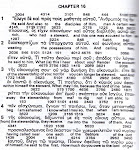

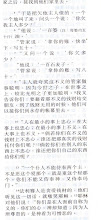






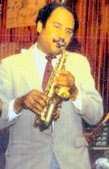







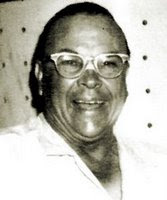




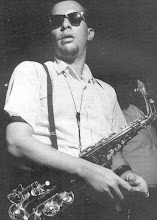

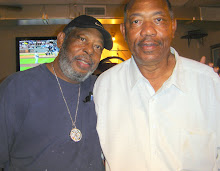


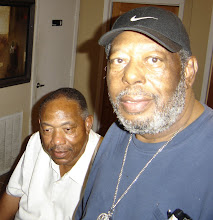













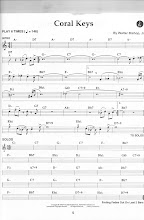

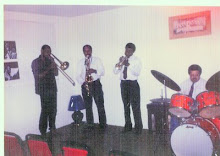






No comments:
Post a Comment